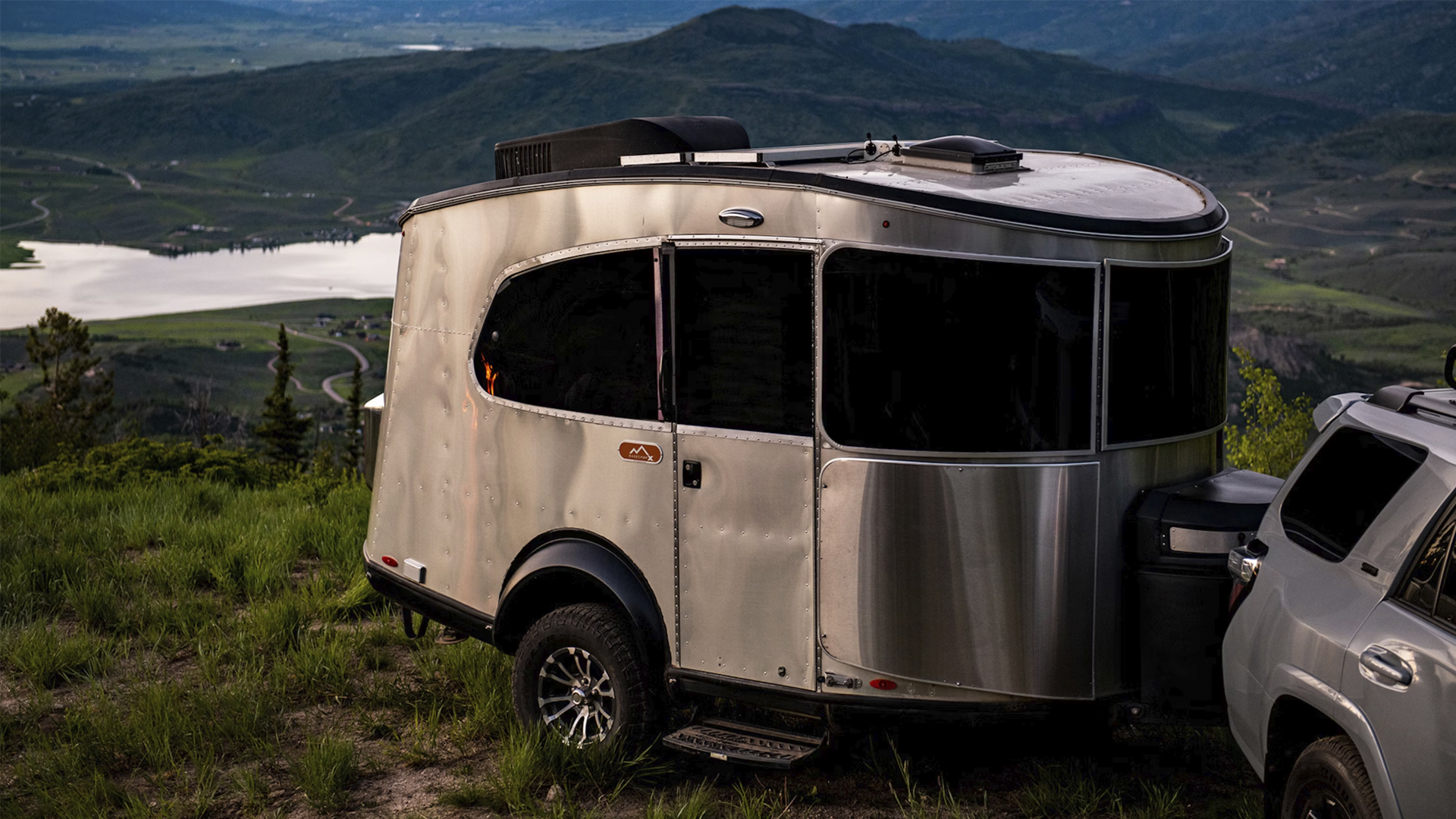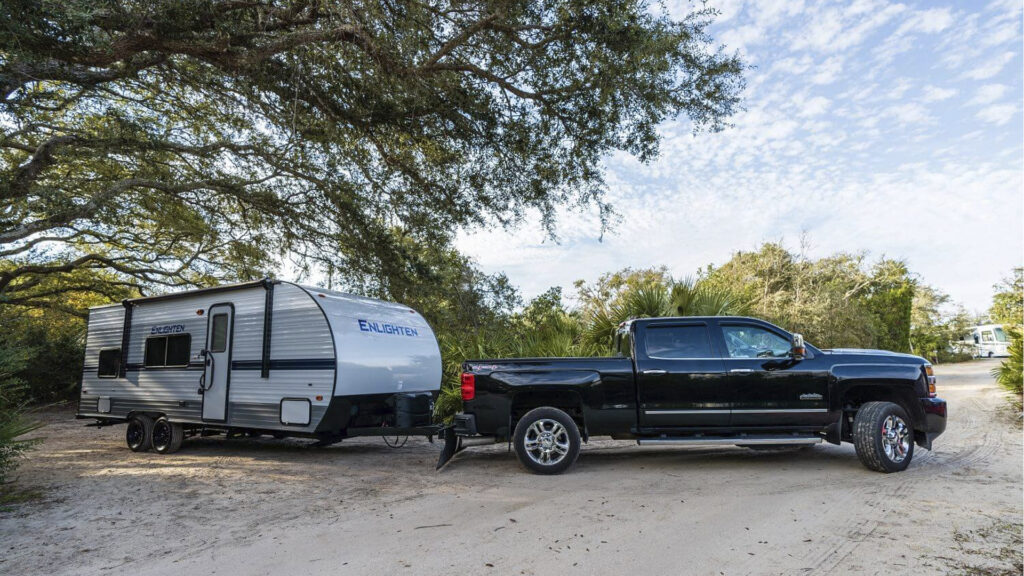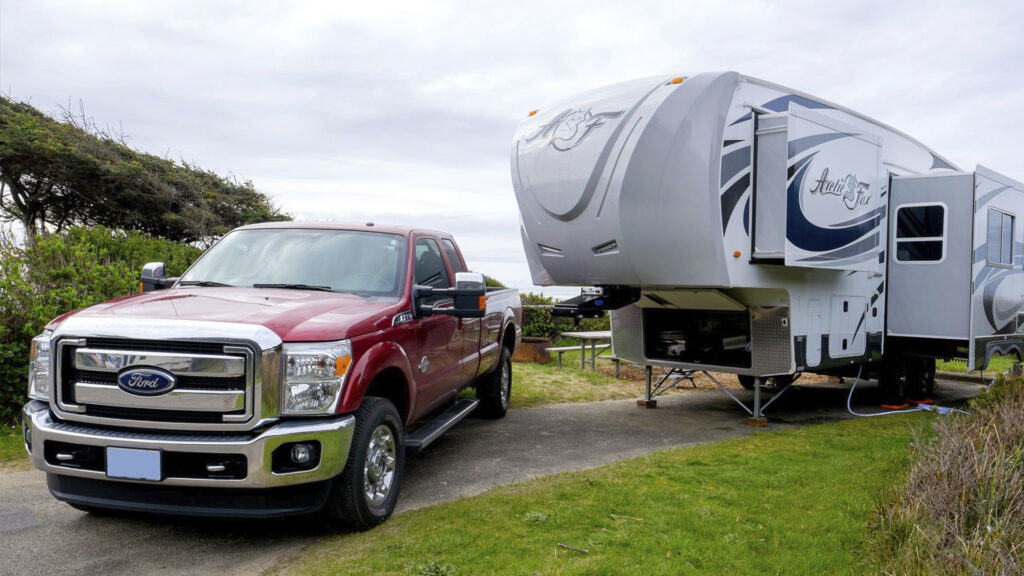
How to Back Up a Travel Trailer: A Guide for RV Enthusiasts
Table of contents
For many RV enthusiasts, learning how to back up a travel trailer can be one of the most intimidating aspects of towing. The maneuver requires precision, patience, and a solid understanding of how the trailer responds to the movements of your tow vehicle. However, once you master this essential skill, it opens up a world of possibilities for parking in tight spots, navigating campgrounds, and safely positioning your trailer in various locations. This guide is designed to help you confidently back up a travel trailer or how to back up a camper by offering step-by-step instructions, practical tips, and solutions to common challenges, including tips for backing up a travel trailer. Whether you’re a new RV owner or an experienced traveler looking to refine your skills, understanding the nuances of backing up a trailer will enhance your overall RV experience.
Understanding the Basics of Trailer Backing
Before diving into the details of how to back up a travel trailer or camper, it’s crucial to grasp the basic principles. Unlike backing up a car, where your vehicle moves in the same direction as your steering input, backing up a trailer requires the opposite action.
When reversing with a trailer, the trailer moves in the opposite direction of the tow vehicle. So, if you want the trailer to go right, you need to turn the steering wheel left. This concept is often one of the trickiest aspects for new RV owners to master, but with practice, it becomes second nature.
Key things to keep in mind:
- Opposite steering: Turn your wheel in the opposite direction of where you want the trailer to go.
- Pivot points: The point where the trailer attaches to the tow vehicle is critical for maneuvering.
- Take it slow: Small, controlled movements are better than fast, erratic ones.
Essential Equipment and Preparation

To successfully back up a camper, it’s essential to have the right equipment and prepare your vehicle for the task. Tips for backing up a travel trailer include having the proper tools and making necessary preparations to ensure smooth backing. Here are some tools and preparations to help:
- Backup Cameras: Many modern RVs come with backup cameras, making it easier to see what’s behind you and helping you gauge distance.
- Extended Side Mirrors: Install extended side mirrors to improve your view of the trailer’s sides while backing up. This added visibility is crucial for avoiding obstacles.
- Spotters: Having a spotter outside the vehicle can significantly improve your chances of success. Your spotter should stand where you can easily see them, guiding you with clear hand signals.
- Clear Communication: Establish simple, clear communication with your spotter, ensuring both of you are on the same page about which direction the trailer should go.
The Step-by-Step Process for Backing Up a Travel Trailer
Now that you’re familiar with the basics and have the right equipment, here’s a detailed breakdown of how to back up a travel trailer step by step.
Step 1: The Site Survey
Before attempting to back up your trailer, always survey the area where you’ll be parking. Walk around the site and identify any potential obstacles, such as trees, rocks, or other vehicles. Assess the available space and plan the backing route.
Step 2: The Starting Position
Positioning your tow vehicle and trailer at the right angle is key to a successful backing maneuver. Start by pulling forward, aligning the vehicle and trailer as straight as possible. The ideal angle for backing is a wide, gradual turn rather than a sharp one, which can make steering difficult.
Step 3: The Cut-Back Turn
Once you’re positioned, begin the backing process by making small, controlled steering adjustments. Place your hand at the bottom of the steering wheel to make it easier to remember the direction of movement—turn the wheel in the opposite direction of where you want the trailer to go.
Step 4: The Unwind and Follow
As you move the trailer backward, watch its movements carefully. Make adjustments by slightly “unwinding” your steering wheel as the trailer begins to follow the path you’ve set. Slow, deliberate movements are key here.
Step 5: The Pull Forward (if necessary)
If the trailer starts to drift off course or you find that the turn is too sharp, don’t hesitate to pull forward to realign the vehicle and trailer. This is a common tactic used to correct positioning and doesn’t reflect a mistake.
Step 6: The Final Push Back
As you near the final parking spot, use the last few feet to make any minor adjustments to the trailer’s angle. Use your side mirrors or spotter to ensure everything is aligned perfectly.
Advanced Techniques and Troubleshooting

The Z Method for Backing a Trailer
One advanced technique for backing up a travel trailer, known as “Tips for backing up a travel trailer,” is the Z method. This involves turning the wheel sharply in the opposite direction at first and then following through with a gradual correction as the trailer begins to back into place. The Z method is especially useful in tighter spots where you need to make sharp turns.
Backing Up a Camper at 90 Degrees
In certain situations, you may need to back up a travel trailer into a 90-degree parking spot, such as in tight campgrounds. This maneuver requires careful control and an understanding of how much space you have to work with. Begin by creating as wide a turning angle as possible before backing up slowly and making micro-adjustments to the steering wheel.
Common Challenges and Solutions
- Jackknifing: This occurs when the trailer turns too sharply, and the trailer and vehicle form a V-shape. If you feel this happening, pull forward and realign the vehicle and trailer.
- Drifting: If the trailer starts to drift off course, make small adjustments to the steering wheel. Avoid over-correcting, as this can lead to further misalignment.
Practice Exercises and Tips for Improvement
The more you practice backing up a trailer, the better you’ll become at it. Here are a few exercises to help you improve:
- Empty Parking Lot: Find a wide, open space such as an empty parking lot to practice your backing skills. Set up cones or markers to simulate obstacles or parking spaces.
- Try Different Angles: Practice backing into spaces from different angles and positions to get a feel for how your vehicle and trailer move in relation to each other.
- Mock Campsite Setup: If possible, simulate backing into a campsite by setting up obstacles like cones or ropes to mimic trees or rocks.
Learning how to back up a travel trailer or camper is a crucial skill for any RV enthusiast. While it may seem challenging at first, following these steps and practicing regularly will help you build confidence and competence in backing up a trailer. Whether you’re navigating tight campgrounds or simply parking at home, mastering this skill can significantly enhance your overall RVing experience.
Remember, take your time, communicate clearly with your spotter, and don’t be afraid to pull forward and realign when needed. Tips for backing up a travel trailer include practicing in open spaces and using reference points. With the right techniques and a bit of patience, you’ll be able to back up your travel trailer like a pro!
Protect Your RV While Perfecting Your Backing Skills
Ready to take your RV adventures to the next level? Now that your know how to back up a camper, make sure your RV is fully protected with our custom skirting solution. Our tailor-made skirting offers unbeatable insulation and protection, sealing out water, snow, and wind with our exclusive “No-Snap, No-Gap” channel system. Whether you’re hitting the road in winter or venturing into the great outdoors, our skirting ensures your RV is prepared for any weather. Book your custom RV skirting today and enjoy a flawless fit, added comfort, and enhanced confidence on every trip!
